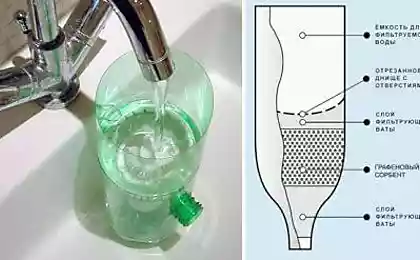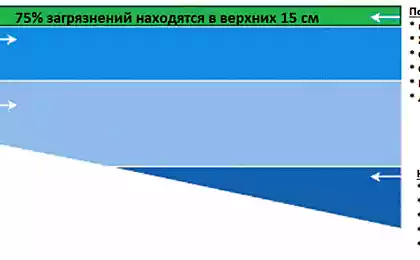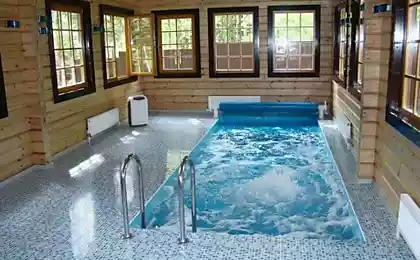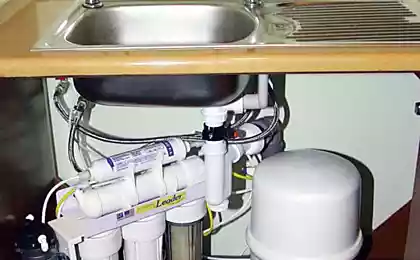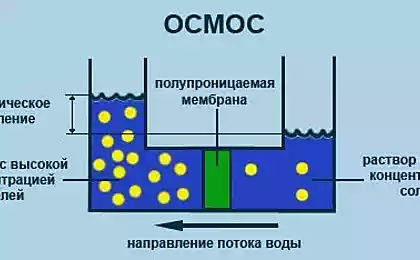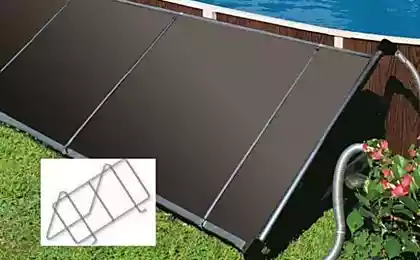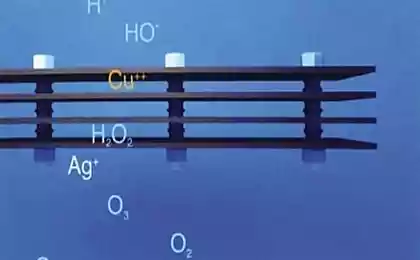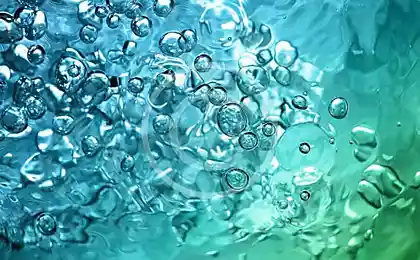509
Ozone systems: Clean, clear, blue water in the pool
Why swimming pool water must be cleaningWater in swimming pools, spas and hot-tubs are almost always cleaning. The main pursued goal is to achieve confidence that the water is really clean and won't harm the health of swimmers. The basis of a complex of measures for decontamination of water in any pool is the filtration system which allows you to remove pool debris dirt.
However, to obtain really pure water it is not enough. Bacteria, viruses, spores and organic compounds are inevitably recorded in the water from both the air and by bathing. These organisms and pollutants are either very small, or soluble in water and are not trapped by the filter. Because they pose a serious threat to bathers, the data of pathogenic and harmful substances need to be neutralized or removed from the water.
For these purposes, throughout the world most commonly used treatment swimming-pool water with chlorine or substances that decompose to give off chlorine. Chlorine is an effective disinfectant: it kills many bacteria and some viruses – as well as a fairly strong oxidant and reacts with organic substances contained in water.

However, chlorination has a number of drawbacks. Chlorine does not destroy a significant number of microorganisms, many of which (such as Cryptosporidium parvum and Giardia lamblia) is very hazardous to health and, in particular, can cause acute gastro-intestinal diseases. The oxidation of chlorine contained in water of organic compounds (such as urea) as byproducts formed the so-called chloramines. Substances of this class are poisonous and have a whole bunch of undesirable properties:
Ozone and how it can help in the purification of waterOzone is a gas, which in first approximation can be thought of as "concentrated" form of oxygen. It is responsible for the ozone "smell the freshness" that occurs after a storm, on the beach or in the room with a working copier. Ozone is formed by passing an air stream through an electric arc (called corona discharge). Another method of obtaining consists in passing the air through a special UV lamp. Ozone — an unstable connection. It rapidly decomposes to form oxygen. Half-life is 20 minutes at room temperature, that is, every 20 minutes the concentration of ozone is reduced by half. Therefore, ozone must always be generated in that location.
Gaseous ozone has a very strong bactericidal action: it kills microorganisms, which are not chlorine. Thus, with the correct dosage of ozone is a very good disinfectant. It is effective even against Cryptosporidium parvum and Giardia lamblia. In addition to the bactericidal action, it has a very strong oxidizing properties, therefore, successfully removes the organic pollutants present in the basin water. In addition, the simultaneous use of ozone and chlorine destroys chloramines, which allows almost completely avoid the side effects of chlorination.
The main advantages of using ozone for water purification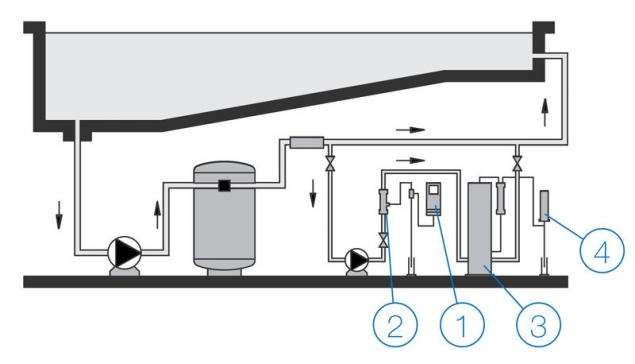
The figure shows a typical system diagram of the ozonization of water in the small pool.Equipment for ozonation is typically located in the utility room just behind the filter. Gaseous ozone is formed in the generator (1), after which it is mixed with water coming from the contour of the filtration system. Further, the mixture of water and ozone at a certain time enters the contact receptacle (3), where the ozone reacts with the water contained in the organic substances, bacteria and viruses. Excess gaseous ozone is destroyed in the destructor of ozone (4) where it is converted into oxygen that is released into the atmosphere. Purified water goes back into the pool.
The above scheme is General for any ozone treatment systems. Often, however, schema changes, for example:
For small private pools, used by one family, entirely to renounce the use of chlorine. The exception is a situation when the pool is enjoyed by a large number of strangers, for example, during children's parties.
However, in most cases, the use of ozone can significantly reduce the content of free chlorine (public pools up to the minimum allowed by normative documents of concentration), while the main burden of the disinfection and oxidation takes ozone.
A properly designed water purification system with ozone ensures the destruction of dangerous pathogens, are resistant to chlorine, and the almost complete removal of dangerous chloramines having a bad odor. Summarizing the above material, it should be noted that although usually it is impossible to completely abandon the use of chlorine in swimming pools with ozone concentration of free chlorine can be significantly reduced, since ozone is a more effective disinfectant destroys microorganisms that are insensitive to the action of chlorine. The use of ozone in conjunction with chlorine, virtually eliminates the side effects of chlorination.
Ozone is not only a disinfectionAlthough the main advantages of using ozone are its exceptional oxidative and disinfectant properties are also important and less visible from the first sight advantage. Along with other amazing features, ozone is a flocculant. This property affects the behavior of very small colloidal particles always contained in the basin water. These particles are so small that normally pass freely through the filtration system. However, in the presence of ozone, they are combined into larger aggregates, which are easily trapped by filters. As a result, significantly improve the optical properties of water, which becomes more translucent, blue and shiny. In cases where particular importance is the view of the water, like the Olympic games and other competitions, or in pools for snorkeling, almost always applied ozonation.

In addition, many believe that the ozone-treated water is more silky, soft and pleasant for skin and hair. This effect has still not got the scientific evidence, however, the amazing properties of the ozonated water notes the majority of swimmers. In the case of ozone water treatment, visitors always note the absence of a characteristic smell. This is especially noticeable in specialized pools with artificial waves or waterfalls: only the use of ozone for water purification allows to avoid the strong odor associated with the release of significant quantities of chloramines into the air. Finally, the bathers and attendants of swimming pools where water treatment is applied ozone, note the absence of chloramines caused by irritation of the eyes, mucous membranes and skin.
On the world market there are a number of well-known manufacturers ozone treatment systems water, including Scottish company Triogen Ltd, which offers probably the widest on the market range of installations. The company produces systems ozonation system water treatment UV light and combined units, in connection with which can find the optimal solution for each specific case.
After all, almost always there is a perfect system, ozonation, treatment with UV light or a combination installation for every pool, from small private font up to the largest Olympic venues in swimming pools or water parks. published
P. S. And remember, only by changing their consumption — together we change the world! ©
Join us in Facebook , Vkontakte, Odnoklassniki
Source: www.simeon-pool.ru/products/articles/sistemy-ozonirovaniya-chistaya-prozrachnaya-golubaya-voda-v-lyubom-bassejne?region=80
However, to obtain really pure water it is not enough. Bacteria, viruses, spores and organic compounds are inevitably recorded in the water from both the air and by bathing. These organisms and pollutants are either very small, or soluble in water and are not trapped by the filter. Because they pose a serious threat to bathers, the data of pathogenic and harmful substances need to be neutralized or removed from the water.
For these purposes, throughout the world most commonly used treatment swimming-pool water with chlorine or substances that decompose to give off chlorine. Chlorine is an effective disinfectant: it kills many bacteria and some viruses – as well as a fairly strong oxidant and reacts with organic substances contained in water.

However, chlorination has a number of drawbacks. Chlorine does not destroy a significant number of microorganisms, many of which (such as Cryptosporidium parvum and Giardia lamblia) is very hazardous to health and, in particular, can cause acute gastro-intestinal diseases. The oxidation of chlorine contained in water of organic compounds (such as urea) as byproducts formed the so-called chloramines. Substances of this class are poisonous and have a whole bunch of undesirable properties:
- cause unpleasant smell found in many pools;
- irritate mucous membranes and cause allergic reactions (e.g. red eye);
- cause irritation of the skin;
- adversely affect the respiratory system, and this is especially true in children;
- cause corrosion of pool structures and premises in which it is located, destroy wood, ceramics, steel, concrete and plaster.
Ozone and how it can help in the purification of waterOzone is a gas, which in first approximation can be thought of as "concentrated" form of oxygen. It is responsible for the ozone "smell the freshness" that occurs after a storm, on the beach or in the room with a working copier. Ozone is formed by passing an air stream through an electric arc (called corona discharge). Another method of obtaining consists in passing the air through a special UV lamp. Ozone — an unstable connection. It rapidly decomposes to form oxygen. Half-life is 20 minutes at room temperature, that is, every 20 minutes the concentration of ozone is reduced by half. Therefore, ozone must always be generated in that location.
Gaseous ozone has a very strong bactericidal action: it kills microorganisms, which are not chlorine. Thus, with the correct dosage of ozone is a very good disinfectant. It is effective even against Cryptosporidium parvum and Giardia lamblia. In addition to the bactericidal action, it has a very strong oxidizing properties, therefore, successfully removes the organic pollutants present in the basin water. In addition, the simultaneous use of ozone and chlorine destroys chloramines, which allows almost completely avoid the side effects of chlorination.
The main advantages of using ozone for water purification
- protect swimmers from illness caused by microorganisms resistant to chlorine
- almost complete elimination of irritating chloramines to the eyes, mucous membranes, skin and respiratory tract
- elimination of unpleasant "smell a pool"
- the high conservation of the materials of the pool and the room in which it is located, due to the almost complete removal of chloramines.

The figure shows a typical system diagram of the ozonization of water in the small pool.Equipment for ozonation is typically located in the utility room just behind the filter. Gaseous ozone is formed in the generator (1), after which it is mixed with water coming from the contour of the filtration system. Further, the mixture of water and ozone at a certain time enters the contact receptacle (3), where the ozone reacts with the water contained in the organic substances, bacteria and viruses. Excess gaseous ozone is destroyed in the destructor of ozone (4) where it is converted into oxygen that is released into the atmosphere. Purified water goes back into the pool.
The above scheme is General for any ozone treatment systems. Often, however, schema changes, for example:
- For air intake from the environment and feeding ozone into the loop filter used injector Venturi (2) (water jet pump). Feature of this system is negative pressure in the circuit. The advantage of this approach is that in the event of leakage installation, ozone will not go into the atmosphere
- for larger pools or pools with heavy traffic the entire flow of water passing through the filter, treated with ozone. This is the most effective method of treatment is called a complete ozonation. In the private pools or pools with low permeability processed only a part of the circulating water filtration system that seems to be more justified from an economic point of view
- there are ozone systems in which all the equipment is included in a single unit. The advantages of such systems include small size and easy installation (only need to embed this system into the contour of the filter of the pool and connect the power supply). In some cases, water treatment with ozone is accompanied by a stage of irradiation with ultraviolet light, which provides additional disinfection and destruction of ozone residue in the water.
For small private pools, used by one family, entirely to renounce the use of chlorine. The exception is a situation when the pool is enjoyed by a large number of strangers, for example, during children's parties.
However, in most cases, the use of ozone can significantly reduce the content of free chlorine (public pools up to the minimum allowed by normative documents of concentration), while the main burden of the disinfection and oxidation takes ozone.
A properly designed water purification system with ozone ensures the destruction of dangerous pathogens, are resistant to chlorine, and the almost complete removal of dangerous chloramines having a bad odor. Summarizing the above material, it should be noted that although usually it is impossible to completely abandon the use of chlorine in swimming pools with ozone concentration of free chlorine can be significantly reduced, since ozone is a more effective disinfectant destroys microorganisms that are insensitive to the action of chlorine. The use of ozone in conjunction with chlorine, virtually eliminates the side effects of chlorination.
Ozone is not only a disinfectionAlthough the main advantages of using ozone are its exceptional oxidative and disinfectant properties are also important and less visible from the first sight advantage. Along with other amazing features, ozone is a flocculant. This property affects the behavior of very small colloidal particles always contained in the basin water. These particles are so small that normally pass freely through the filtration system. However, in the presence of ozone, they are combined into larger aggregates, which are easily trapped by filters. As a result, significantly improve the optical properties of water, which becomes more translucent, blue and shiny. In cases where particular importance is the view of the water, like the Olympic games and other competitions, or in pools for snorkeling, almost always applied ozonation.

In addition, many believe that the ozone-treated water is more silky, soft and pleasant for skin and hair. This effect has still not got the scientific evidence, however, the amazing properties of the ozonated water notes the majority of swimmers. In the case of ozone water treatment, visitors always note the absence of a characteristic smell. This is especially noticeable in specialized pools with artificial waves or waterfalls: only the use of ozone for water purification allows to avoid the strong odor associated with the release of significant quantities of chloramines into the air. Finally, the bathers and attendants of swimming pools where water treatment is applied ozone, note the absence of chloramines caused by irritation of the eyes, mucous membranes and skin.
On the world market there are a number of well-known manufacturers ozone treatment systems water, including Scottish company Triogen Ltd, which offers probably the widest on the market range of installations. The company produces systems ozonation system water treatment UV light and combined units, in connection with which can find the optimal solution for each specific case.
After all, almost always there is a perfect system, ozonation, treatment with UV light or a combination installation for every pool, from small private font up to the largest Olympic venues in swimming pools or water parks. published
P. S. And remember, only by changing their consumption — together we change the world! ©
Join us in Facebook , Vkontakte, Odnoklassniki
Source: www.simeon-pool.ru/products/articles/sistemy-ozonirovaniya-chistaya-prozrachnaya-golubaya-voda-v-lyubom-bassejne?region=80

